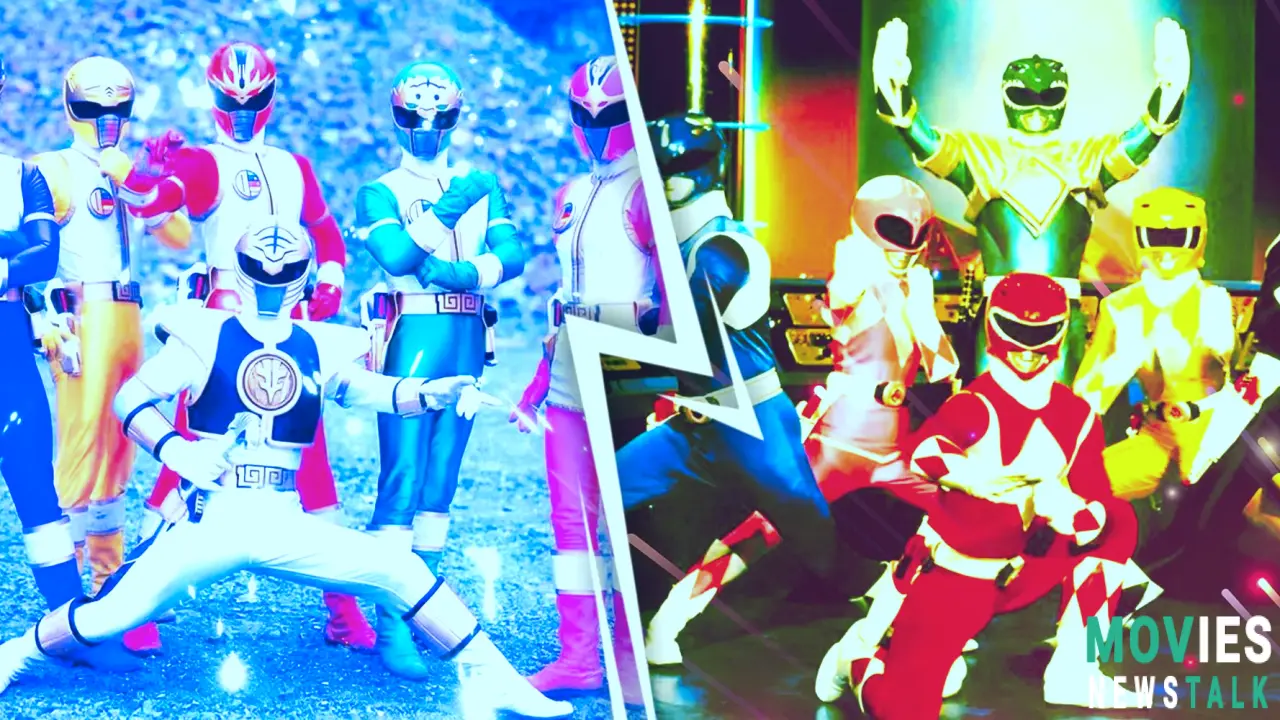Power Rangers: How a Plot Hole Sparked a Multiverse of New Ranger Teams!
Power Rangers Super Megaforce: The Legendary Key Controversy
Power Rangers Super Megaforce (2013), a 25th-anniversary season, introduced Legendary Ranger Keys—an awesome way to bring back old Ranger teams and powers. But it created a massive plot hole! It all stemmed from the show's inspiration; the Japanese show that inspired this whole concept is known as Gokaiger.
While generally poorly received, this season is really a big deal in Power Rangers history. The premise? Using these keys, the team morphs into older Ranger outfits—except a bunch of keys showed up for teams never used in AmericanPower Rangers.The initial story premise is something quite fun and engaging yet it created various difficulties which ultimately produced surprisingly unexpected and new lore elements.
This had a major issue, because Megaforce’s origin show (Goseiger) differed greatly from the origin series Super Megaforce (Gokaiger). Those differences meant someSuper Sentaiteams had no directPower Rangerscounterparts, thus producing plot holes.There weren’t really adequate story reasons given to account for such occurrences! The creative teams decided that solving such problems requires ingenuity, rather than merely abandoning such ideas completely.
The “New Powers” Solution (and the Multiverse it Unleashed!)
The most direct fix? Presenting those unused Ranger costumes inSuper Megaforceas representing "New Powers" never before seen. This comes from their mentor Gosei.It's not very detailed. This simple fix opened a giant can of worms—creating several additional story developments that ultimately led to expanding this entire universe into an amazing multiverse!
That "never before seen on this planet" line was seriously vague. Many people wondered: maybe other planets or universes? This totally opens possibilities for various future plotlines! Previous seasons likeIn SpaceandLost Galaxyalready had similar alien sources of Ranger power. The existing multiversal structure added more depth for this entire narrative.
The Legendary Battle: A Crossover That Could've Been Greater
This whole concept expands into the legendary "Legendary Battle," one ofSuper Megaforce'sbiggest attempts for a crossover—and this fails to really satisfy those initial expectations which was disappointing for those involved. The fact that several non-Power Rangerscharacters show up, the show needed a stronger explanation—but it doesn’t really fully account for this moment; thus this becomes one of the many elements showing how poorly conceived this entire battle scene had become; a major low point in the series overall, as well as demonstrating how such ambitious ideas can still fall flat and miss those critical targets which creates some incredibly frustrating experiences. It lacks explanation of the appearances which make its inclusion seem almost lazy, compared to much stronger writing that had been present in some later installments.
BOOM! Studios and the Canonization of Super Sentai
ThoseSuper Sentaiteams, used initially because the team liked what appeared, actually changed the universe, folks! BOOM! StudiosPower Rangerscomics took advantage. They established a multiverse; creating crazy potential and new stories and plots, especially that allowed those writers far more creative leeway. They then added those never-before-seenSuper Sentaiteams in a clever, respectful way.
Those amazing storylines introduced concepts not covered by the show. TheSquadron Rangers(from Dairanger) are introduced as legendary ancient heroes, giving amazing explanations for various points of canon. This shows those same aspects concerning some other similarly introduced concepts and their histories in the comics; adding even further importance for those kinds of moments when combined with the already existing lore that shows how powerful and extensive this entire universe had become!
A Long Time Coming: Acknowledging Super Sentai in Power Rangers
It's noteworthy to emphasize just how surprisingly late it became before Super Sentai was officially mentioned and featured prominently in the storyline, adding another surprisingly great Easter egg, showcasing an almost respectful gesture and connection between two vastly different teams: Dino Thunder’s"Lost And Found In Translation"(2004). The Rangers discover this totally interesting Japaneseshow (actually Abaranger, the origin series for Dino Thunder) It shows amazing detail and really emphasizes why acknowledging both those different cultural production aspects makes a fun nod—and the history itself matters too. Although, fans generally agreed on something: those ideas about this other Japanese-made show occurring in one ofPower Rangers’multiple realities doesn't quite match up with the ideas already presented within these comics!
Conclusion:A Plot Hole That Transformed the Power Rangers Universe
ThatSuper Megaforceplot hole? An epic moment demonstrating great creative choices! That simple mistake, and what exactly it implied, brought brand new ranger teams and ultimately completely transformed the storyline overall; adding another plot element concerning multiversal theories that changed many expectations and established the existence of such concepts more definitively. This expanded storytelling options; and created amazing stories; usingSuper Sentaiin meaningful ways; and demonstrated that sometimes the best fixes create new avenues for fun! That unplanned development shows creativity at its best. So remember that seemingly little mistake—that's something major!

